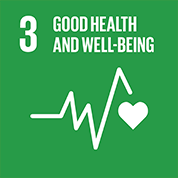Saving and improving babies’ lives
 The Infant Mortality and Morbidity Studies (TIMMS) Research Group has played a major role in reducing stillbirth and neonatal deaths through national surveillance, cohort studies and confidential enquiries into the quality of maternity and child health care in the UK for more than 20 years.
The Infant Mortality and Morbidity Studies (TIMMS) Research Group has played a major role in reducing stillbirth and neonatal deaths through national surveillance, cohort studies and confidential enquiries into the quality of maternity and child health care in the UK for more than 20 years.
Their work has fed into national programmes leading to 20% stillbirth reduction in the UK and changed clinical practice guidelines globally.

The delivery of safe, high quality maternity and neonatal care is vital in preventing avoidable deaths and improving outcomes for children and families. For each death, it is important to understand the cause and to review the quality of care provision in order to make changes to service provision to prevent reoccurrences.
Improvements have been made through development of an evidence base founded on novel methodologies.
The group has undertaken world-leading interdisciplinary research in partnership with clinicians, families and the public, investigating the causes, consequences and management of morbidity and mortality of the foetus and newborn infants and the development of children born preterm.
TIMMS leads the Mothers and Babies: Reducing Risk through Audits and Confidential Enquiries across the UK (MBRRACE-UK) perinatal surveillance and confidential enquiry programme collecting data for all stillbirths and neonatal deaths across the UK, providing real time data monitoring for NHS Trusts and Health Boards as well as local and national reports. A regular rolling programme of confidential enquiry topics has provided expert consensus reviews to enable a better understanding of why babies are still born or die soon after birth: reports that have led to changes in NHS healthcare practice and policy.
The long-term consequences of preterm birth
Each year, 15 million babies are born preterm worldwide.
Improved obstetric and neonatal care means many more preterm babies survive than ever before, but a significant number of these may need long-term care or support.
University of Leicester research has shown that children born preterm are at high risk of developmental problems, learning difficulties and special educational needs later in life. This research has directly improved standards of follow-up care, both nationally and internationally, for this vulnerable population of children by:
- informing clinical guidelines, including the National Institute for Health and Care Excellence guidelines on developmental surveillance for children and young people born preterm
- demonstrably altering clinical practice via the provision of a parent-completed questionnaire designed to assess the development of children born preterm - the Parent Report of Children’s Abilities-Revised (PARCA-R)
- the creation of a free online learning resource that has raised awareness of prematurity in the education sector and is helping enhance the quality of educational support for preterm born children and their families.
Educating teachers
Life-saving advances mean there is a growing number of preterm children with developmental problems entering schools year on year.
To improve educational support for this vulnerable population, Professor Samantha Johnson and colleagues developed a new evidence-based ‘Preterm Birth E-Learning Resource’ to raise awareness of prematurity and equip staff with the skills they need to support children’s learning.
Of the 60,000 babies born preterm each year in the UK, approximately 5,000 may go on to have special educational needs and many more may struggle in school.
Professor Johnson’s research has demonstrated that the special constellation of developmental problems experienced by preterm- born children means that their difficulties may be missed. The use of the ‘Preterm Birth E-Learning Resource’ by educational professionals has led to increased awareness of the challenges preterm-born children face, enhanced support for preterm children in the classroom, and stronger relationships between schools and parents.
To date, over 16,000 individuals from 54 different countries have accessed the e-learning tool, including teachers, early years practitioners, educational psychologists, healthcare professionals and parents, leading to changes in classroom practices as a result.
Professor Johnson said: “Importantly, the resource has strengthened relationships between schools and parents of preterm children by providing parents with the evidence they need to raise the issue of their child’s birth history with the school.”





